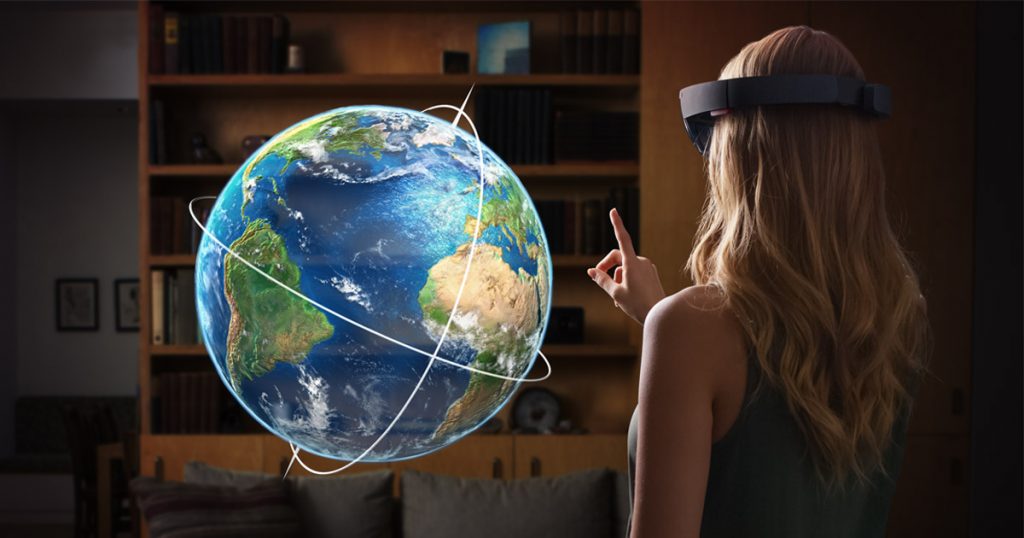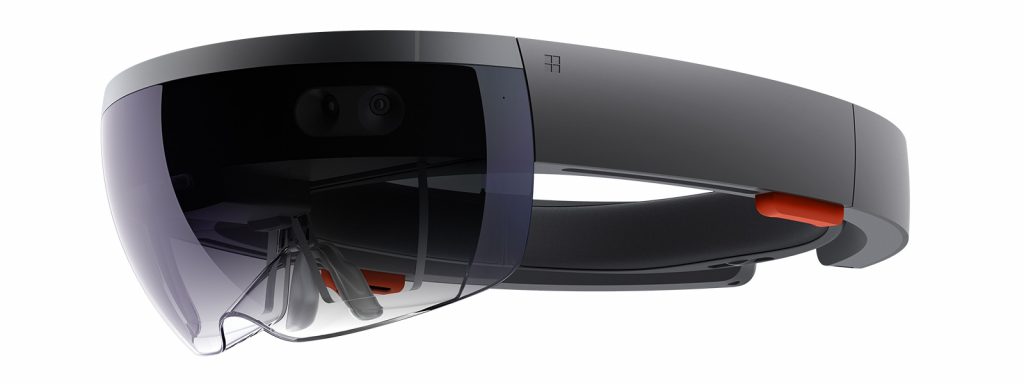LiFi and HUD are two completely unrelated technologies, and yet they hold enormous potential, especially if they are used together in the next generation of wearable devices. Such devices might even free us from our smartphones once and for all.
LiFi technology

We’re all familiar with WiFi and how it is used to provide connectivity to mobile devices. A competing technology that is starting to draw attention is LiFi. LiFi transmits data using visible light instead of radio waves.
Although fiber optic systems have used light as a medium for transmitting data for decades, LiFi is different, because it does not require the use of fiber optic cable. Imagine a lightbulb that is able to simultaneously light up a room and transmit data, and you will begin to get a sense of what LiFi is.
LiFi technology centers on the use of an LED bulb. Although LED light bulbs are a mainstream technology, it is easy to forget that LED bulbs differ significantly from incandescent bulbs because LEDs are light emitting diodes. In other words, LEDs are semiconductors.
With that in mind, consider that teachers introducing first-year computer students to the concept of binary code often use the analogy of a light bulb. In those analogies, a bulb that is emitting light represents a binary value of 1 (on), and a lightbulb that is not giving off any light represents a binary state of 0 (off).
LiFi is a literal implementation of this analogy. A digital circuit turns an LED on and off as a way of transmitting binary data. The transmissions occur at such a high rate, that the human eye is unable to see the flicker. To a human, the light bulb appears to be on all the time.
From a tech standpoint, there are two reasons why LiFi is significant. First, LiFi is a lot faster than WiFi. LiFi can theoretically transmit data at a rate of 224 gigabits per second.
The other reason why LiFi is significant is that it only supports unidirectional data flow, or at least that’s the case for the implementations that I have seen. This means that while you won’t be able to use LiFi to surf the Web (at least not yet), it is well-suited to streaming large amounts of data to one device, or even to many devices at the same time (think of video being streamed to a crowd of people).
HUD technology

Heads up display (HUD) is another technology that has been around for decades. Fighter pilots have long used HUDs as a tool for reducing their workload in the cockpit. Space shuttle astronauts used a HUD to guide them around the Heading Alignment Circle in preparation for landing. Even the suborbital spaceflight simulator that I learned to fly last year conveys key flight data through a HUD so that the pilot does not have to constantly look down at the glass panel displays. Of course, HUDs aren’t unique to aircraft and spacecraft. Many of the cars that are being manufactured today are equipped with HUDs. The 2018 Toyota Camry (the V-6 XSE model), for example, displays speed, navigation, and cruise control information on its HUD.
Although HUDs have thus far been used primarily in vehicles, HUD technology is starting to find its way into the wearables market in the form of smartglasses.
The idea of integrating a digital display into a pair of glasses isn’t exactly new. Scuba masks have been available for years that display relevant data to divers.
Of course, Google also experimented with augmented reality in its ill-fated Google Glass. Google Glass was a neat idea, but the optics were too small to be practical, and the device itself was large and ugly enough that it became the butt of many jokes.
Microsoft has also provided an augmented reality solution in the form of HoloLens. As someone who has used HoloLens many times, I can tell you from firsthand experience that HoloLens is an amazing device. Even so, its steep price tag and bulky size mean that it’s probably not something that you are going to wear day in and day out.
The main problem with high profile augmented reality solutions such as Google Glass and Microsoft HoloLens has been that they are large and unsightly, and kind of impractical. But what if all of that technology could be packaged into a normal looking pair of eyeglasses or sunglasses?
Believe it or not, there are a number of companies doing exactly that, and many of these devices can be purchased today. These smart glasses may not generate holograms the way that HoloLens does, but they work surprisingly well.
One of the best available smart glasses is the Vuzix Blade. The Blade acts as an extension to your smartphone, and can display incoming phone calls, messages, navigation directions, and more. The Blade also has a built-in camera for taking photos and videos.
The Vuzix Blade and competing devices are essentially wearable HUDs that display important information from your smartphone, so that you don’t have to worry about constantly looking at your phone.
LiFi and HUD — Better together?

Although LiFi and HUD (more specifically, smartglasses) are completely unrelated technologies, they seem like a perfect match because LiFi has the ability to deliver massive amounts of data to such a device. While researching this article, I did a Web search to see if anyone was using the two technologies together yet. Surprisingly, I found a Fortune article in which the author came up with some very insightful ways in which the two technologies might be used in conjunction with one another.
The author of the Fortune article envisions a world in which attendees at live sporting events can have relevant statistics displayed through their smart glasses while watching the game. The author also envisions a retail experience with virtual mannequins ready to try on any outfit, and digital celebrity spokespersons pitching the retailer’s latest product. The author even mentions the possibility of virtual “pop-up stores” that look real, but that only exist in the digital world.
Unforeseen consequences
LiFi has the ability to stream massive amounts of digital content, and this content can be directed to one person or many. In the case of a sporting event, for example, LiFi could conceivably stream the same content to every person in the entire stadium. Furthermore, because LiFi is based on the use of visible light, its range is limited. This means that any LiFi experiences that may be streamed to smartglasses will be localized to a specific location (such as a particular gate at the airport, or a section of a retail store).
If implemented properly, LiFi and smartglasses could be an amazing combination. At the same time, however, the technology also has the potential to become very, very obnoxious. Imagine walking down the street and being bombarded by ads from one business after another. Imagine having to sit through commercials at live sporting events because the commercials are being live streamed directly into your glasses.
A need for filters
The only way to prevent smartglasses and LiFi from becoming a nuisance is to put controls into place that allow the wearer to filter content by type. Ideally, prompts for content filtering should not occur in real time. Otherwise, someone wearing the glasses might constantly receive prompts asking if they would like to allow content to be streamed. If you have ever used Windows Vista, then just think back to how annoying and intrusive the constant User Account Control prompts were, and you will begin to get a sense for what it could be like to wear smartglasses that support open streaming. My hope is that as such technology is brought to market, manufacturers will include built-in ad blockers and filters that can be set ahead of time, so as to prevent ads and other intrusive content from being displayed.




I think that I first heard about LiFi a couple of years ago yet it still hasn’t been implemented anywhere. Probably because LiFi has two big problems right now.
1: You can’t really use it with the lights off as it needs to transmit light.
2: You can’t get access to a LiFi device in other rooms as light, unlike radio waves, can’t go through objects.